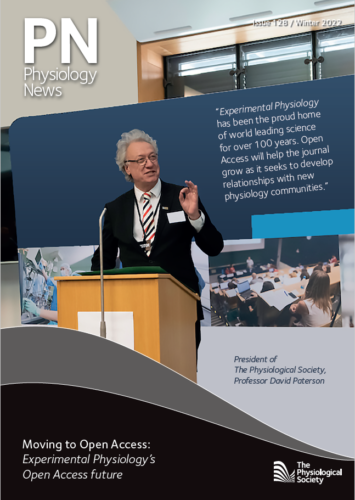
Physiology News Magazine
Using Game of Thrones to teach physiology
Collection of education-themed articles from Europhysiology 2022 conference
News and Views
Using Game of Thrones to teach physiology
Collection of education-themed articles from Europhysiology 2022 conference
News and Views
https://doi.org/10.36866/pn.128.18
Professor Derek Scott
University of Aberdeen, Scotland, UK
How many of us remember during pandemic lockdowns, desperately trying to come up with new and exciting online tutorials that would engage students whilst encouraging them to problem-solve and use their imagination? Easier said than done. My own creativity was starting to run somewhat dry – that is until my lockdown binge-watching came to the rescue. I had finally managed to catch up on all episodes of Game of Thrones from beginning to end and realised that poisons were a recurring theme in the series. Why not use that as the topic of an upcoming tutorial? Given that many people assume that Aberdeen is the equivalent of Winterfell, I decided to give it a try.
Fictional characters help students understand physiological concepts
Previous work by Berg and Polvsing (2016), Fitzgerald (2018) and Brown et al. (2017) have all shown the worth of using fictional characters to help students expand and demonstrate their understanding of complex biomedical concepts. I wanted memorable topics where students would actively participate and apply what they had learned in classes – I had previously used Berg and Polvsing’s article about Darth Vader with great success! Given the popularity of Game of Thrones, we tried to use different storylines to get the students to work out how the fictional poisons/drugs depicted might affect physiological functions. My hope was that even some of the less interactive students might find this unusual enough to contribute more during these online classes.

What’s your poison?
We trialled this approach with students studying a neurophysiology and neuropharmacology module. Many poisons (both fictional and real) target mechanisms and processes that are commonly discussed in courses relating to neuroscience, physiology and pharmacology. Our idea was to flip the classroom during synchronous, online hour-long tutorial sessions and encourage students to apply the knowledge that they already had and use it in novel ways to solve problems. Students (n = 80) did not have to be aware of the content of the television programme, but they could access free video clips on platforms such as YouTube if they wanted to. Students were given some basic scenarios (See Fig.1) to think about. We provided some ideas to get them started (see Fig.2), but the students had to do the rest. These tutorials allowed students to demonstrate not only their mastery of discipline-specific knowledge, but also the wider graduate attributes of imagination, problem-solving, lateral thinking, and originality.
The story so far
Other traditional tutorials in the course that focused on real-life physiological or pharmacological problems (n=11) had an average of 52 comments in the online chat. The comments usually came from the same 7 or 8 students. The Game of Thrones tutorials (I only planned one but ended up doing three on this theme due to student demand) had an average of 203 comments in the online chat, with comments from at least separate 60 students contributing per session. Tutor perceptions were that students were much better at demonstrating their mastery of the discipline-specific material when asked about it in this fictional context, compared to ‘dry’ questions that related to everyday pharmacology or physiology problems. Tutors thought the increased engagement was great but ‘exhausting’. There were a far greater number of follow-up questions via email from individual students (minimum n = 43) after the sessions took place when compared to the other traditional problem-solving tutorials (tutors reported an average of three after such events).
We were delighted that more of the students seemed to be engaging with the material and thinking about whether the science would be possible or not. We stressed that these were not real situations, and the drugs or poisons were fictional, therefore there may not be one correct answer. My students sometimes struggle to accept the concept of ambiguity and these tutorials allowed us to highlight that we don’t always know the ‘right’ answer, but we can use our knowledge of fundamental physiology to help us narrow down the possibilities.

The plot thickens
We’ve continued using these scenarios this academic year when we returned to face-to-face teaching, and their popularity has continued. Our students have already started working on their own fictional characters/scenarios in their own time to explore how valid the science might be. We’ve had discussions ranging from the poisons used in Agatha Christie novels, to what exactly was in Snow White’s apple! It may sound bizarre but this approach can be engaging for both students and tutors. Why not try it yourself? And if anyone asks who you got the idea from, tell them. I want them to know it was me….
References
Berg RMG, Plovsing RR (2016). The hardships of being a Sith Lord: implications of the biopsychosocial model in a space opera. Advances in Physiology Education 40 (2), 234-236.
Brown SP, et al. (2017). Superhero physiology: the case for Captain America. Advances in Physiology Education 41 (1), 16-24
Fitzgerald BW (2018). The physiology of impenetrable skin: Colossus of the X-Men. Advances in Physiology Education 42:4, 529-540
